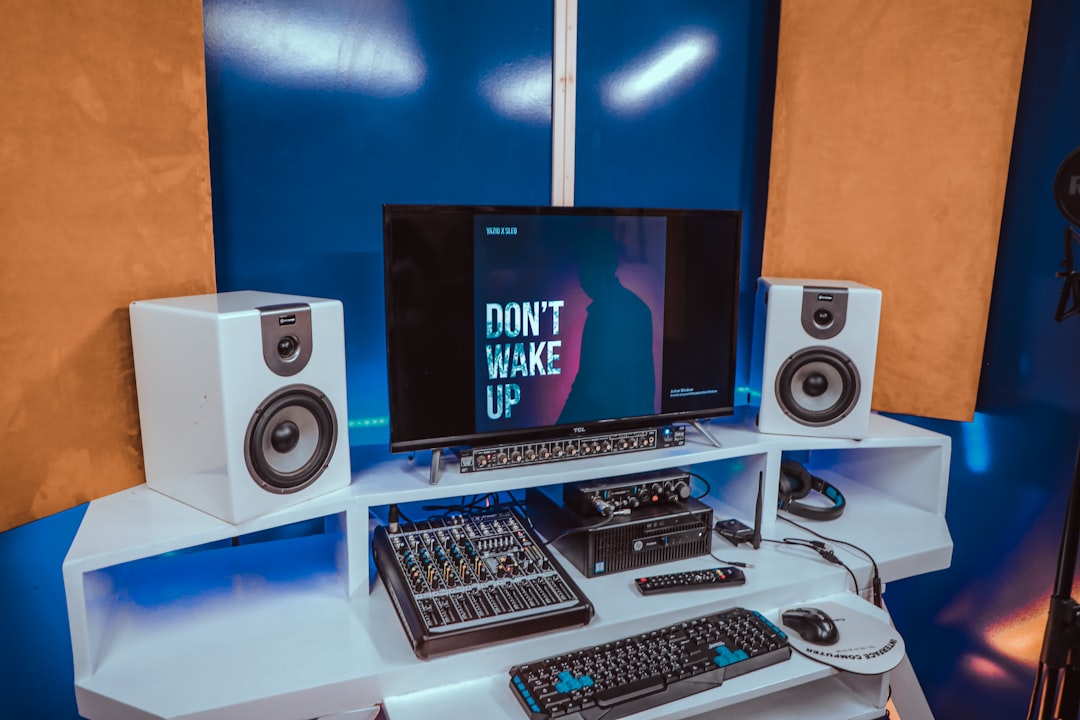How to Choose the Right Musical Instrument for You: A Beginner’s Guide
Choosing the right musical instrument is a vital first step in your music journey. This guide helps beginners find an instrument that fits their goals, physical traits, lifestyle, and budget to ensure a rewarding experience.
Key Takeaways
- Identify your musical goals to narrow down suitable instruments.
- Consider your physical compatibility for comfort and injury prevention.
- Weigh practical factors like space, noise, portability, and maintenance.
- Try instruments before committing to ensure a good fit.
- Plan financially with rentals or beginner models to manage costs.
- Embrace cultural ties to deepen your connection with music.
- Seek guidance from knowledgeable teachers for a tailored learning path.
Table of Contents
- Understanding Your Musical Goals
- Physical Compatibility
- Practical Considerations
- Try Before You Buy
- Budget-Friendly Options
- Cultural Connection
- Beginner-Friendly Instruments
- How Teachers Can Support the Right Choice
- Five Clear Steps to Choosing Your First Instrument
- Final Thoughts
1. Understanding Your Musical Goals
Begin by asking yourself what you want to achieve musically. Clear goals help focus your search and keep you motivated. Here are some typical directions:
- Solo Performer: Instruments like piano or guitar support solo playing and composing.
- Ensemble Player: Consider violin, drums, saxophone, or flute for bands and orchestras.
- Aspiring Songwriter/Composer: Piano and guitar offer deep harmonic potential.
- Casual Music Lover: Ukulele and keyboard are approachable and portable.
-
Preferred Genres:
- Classical: piano, violin, flute
- Jazz: saxophone, upright bass
- Rock/Pop: electric guitar, drums
- Worship Music: acoustic guitar, vocals
- Indian Classical: harmonium, tabla
Defining your musical direction helps choose instruments that inspire and fit your style. Learn more in this beginner’s guide to choosing an instrument.
2. Physical Compatibility: Playing with Comfort and Confidence
Your body’s characteristics influence which instruments will feel comfortable and safe to play. Consider these factors:
- Hand Size and Dexterity: Piano and guitar often require finger stretch and strength; clarinet or trumpet suits smaller hands.
- Lung Capacity: Wind and brass instruments require strong breath control.
- Posture and Coordination: Violin demands good neck and shoulder posture; drumming uses full-body coordination.
- Age and Strength: Lightweight instruments like ukulele and keyboard fit young children well.
- Existing Conditions: Avoid instruments that may aggravate injuries or strain joints.
Picking an instrument aligned with your physical traits helps avoid strain and boosts enjoyment. Find detailed advice here.
3. Practical Considerations: Space, Portability & Noise Control
Your environment and daily routine affect which instrument will fit seamlessly. Keep these in mind:
- Space Needs: Acoustic pianos and drum kits require significant room and sometimes soundproofing.
- Portability: For on-the-go playing, lightweight instruments like ukulele or flute are ideal.
- Noise Factor: Loud instruments might disrupt others; muted or electric versions can help.
- Maintenance: Woodwinds need cleaning; strings require tuning and occasional restringing.
- Power & Equipment: Digital keyboards and electronic drums need power sources and possible extras like amps.
Choose an instrument that fits your living space and lifestyle for hassle-free practice. Read more about lifestyle fit.
4. Try Before You Buy: The Power of Trial Lessons
Hands-on experience is invaluable. Trial lessons help you:
- Feel how the instrument fits your hands and body.
- Hear the sound in person to check if you like it.
- Assess how difficult the initial learning curve may be.
- Avoid regret by ensuring a good connection before commitment.
Look for trial lessons at local music stores, schools, or try virtual demos. Learn more on trial lessons here.
5. Budget-Friendly Options: Renting, Buying, and Planning Ahead
Instruments have upfront and ongoing costs. Planning ensures sustainability:
- Rent or Borrow: Great low-risk ways to start and test your commitment.
- Rental-to-Own: Many stores offer flexible options to buy later.
- Beginner Models: Affordable, quality options made for new players.
- Hidden Costs: Account for cases, stands, tuners, repairs, and lessons.
- Financial Aid: Scholarships or sliding-scale programs can ease expenses.
Explore budgeting tips at Venice Music.
6. Cultural Connection: Music That Resonates With Your Identity
Sometimes the most meaningful instrument is one connected to your heritage or community:
- Cultural Roots: Traditional instruments linked to your region or background.
- Family Traditions: Instruments played by relatives or part of your upbringing.
- Musical Identity: Passion sparked by regional or generational music.
- Community Support: Opportunities to perform and connect locally.
An instrument with personal meaning can deepen your passion. Learn more from this cultural perspective.
7. Beginner-Friendly Instruments: Smart Starting Points
Certain instruments are easier for beginners due to affordability, approachability, and resource availability. Here’s a quick look:
| Instrument | Best For | Common Genres | Highlights |
|---|---|---|---|
| Piano | All ages, especially those with longer fingers | Classical, pop, jazz | Versatile, excellent for theory |
| Guitar | Teens and adults with good hand span | Rock, folk, classical | Portable, widely taught |
| Keyboard | All age groups | Cross-genre | Compact, ideal for starters |
| Flute | Kids to adults | Classical, band, pop | Lightweight, requires breath control |
| Violin | Children and up | Classical, folk | Needs finger agility and posture |
| Saxophone | Older kids and adults | Jazz, pop, classical | Bold sound, demanding breathwork |
| Percussion | All ages | Global genres | Great for rhythm and coordination |
| Ukulele | Young beginners | Pop, folk, island music | Easy entry, affordable, portable |
These instruments are often supported by school programs and structured exams. Dive deeper into beginner-friendly options here.
8. How Teachers Can Support the Right Choice
Experienced music teachers provide invaluable assistance by:
- Informed Guidance: Assessing your interests, lifestyle, and abilities.
- Encouraging Discovery: Promoting experimentation with different instruments.
- Structured Learning: Tailored lessons that balance technique and creativity.
- Motivation: Setting milestones to keep you engaged.
- Flexibility: Offering group, certification, and online options.
Find a supportive teacher to make your start smoother. Read about teacher roles here.
9. Five Clear Steps to Choosing Your First Instrument
Follow these steps to select an instrument confidently:
- Define Your Musical Goals: Solo, group, songwriting, or casual play?
- Assess Your Physical Readiness: Hand size, coordination, breath control, limitations.
- Explore Instrument Trials: Try in-person or online before buying.
- Consider Costs and Resources: Factor in rental, gear, lessons, maintenance.
- Reflect on Cultural and Personal Inspiration: Choose an instrument connected to your identity.
Following these steps lays the foundation for a rewarding musical experience.
Final Thoughts: Begin with Passion, Continue with Purpose
Choosing your first instrument combines passion with practical choices. When your pick matches your abilities, goals, environment, and personal story, it becomes more than a tool—it’s your creative companion. Interests may evolve, and that’s natural. The key is to start thoughtfully, keep exploring, and let your curiosity lead. Whether keys, strings, percussion, or winds, the best instrument inspires joy and growth.
Start your musical journey today—and make music a meaningful part of your life’s soundtrack.
FAQ
Q1: How do I know which instrument suits my hand size?
Instruments like piano and guitar require more finger stretch, so larger hands or more dexterity help. Smaller hands might prefer clarinet or trumpet. Trying instruments or consulting a teacher can clarify what fits comfortably.
Q2: Can I learn an instrument if I have physical limitations?
Yes. Consider instruments that minimize strain and accommodate your condition. For example, lighter instruments or those requiring less finger stretch. A knowledgeable teacher can help adapt techniques to your needs.
Q3: Is renting an instrument better for beginners?
Renting offers a low-commitment way to explore before buying. It reduces upfront costs and allows you to switch if your interests change. Many music stores offer rental-to-own plans as well.
Q4: How important is trying an instrument before purchase?
Very important. Hands-on experience helps assess comfort, sound, and initial learning curve, reducing chances of regret and wasted expense.
Q5: Can cultural background influence my instrument choice?
Absolutely. Connecting with instruments that reflect your heritage can deepen your passion and open opportunities within your community.
For more guidance, explore [this detailed guide](https://monvalleyacademyforthearts.org/choosing-the-right-instrument-a-guide-for-aspiring-musicians/) on choosing musical instruments that fit your journey.






